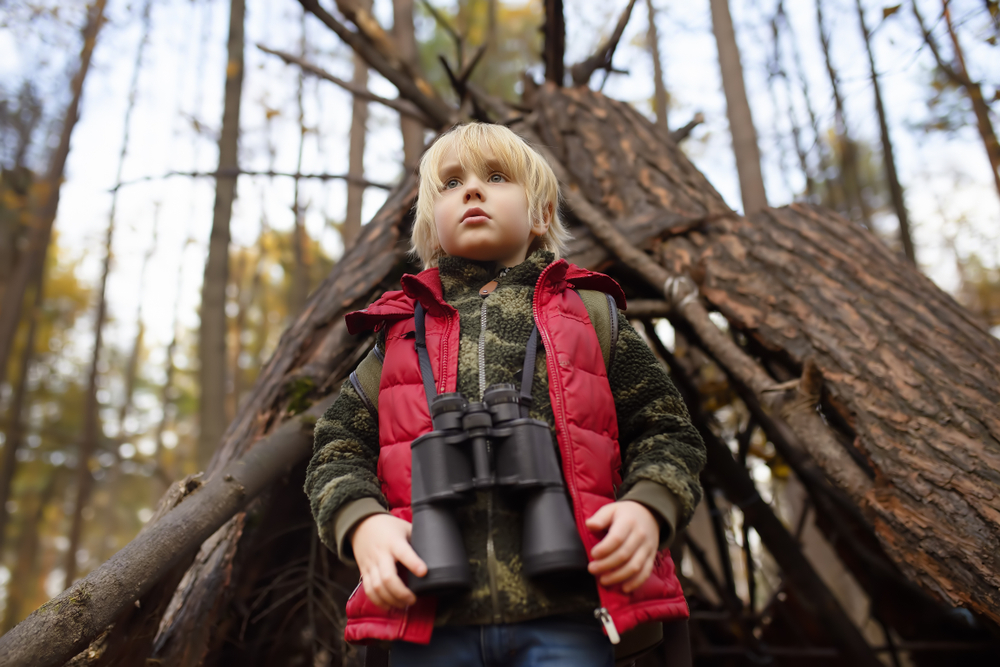As I write this article, I see on the news how people in California are forced to evacuate once again.
It happens year after year, and while others are going to stay with friends and relatives, others will have to stay in improvised camps. This alone should be a good enough reason to plan for the future and establish a base camp in case you are forced to leave your home behind.
A smart thing would be to gather with friends and neighbors and establish a base camp that would offer safety to everyone. You could pool your resources together, and you will stay in a safe place until you are able to return home.
What is a base camp?
To put it in a few words, a base camp can be defined as a base of operation when you are forced to bug out. Once you are on the road, such a place is the main alternative to sustain life for short periods of time. The place where most of your supplies are kept and the place where everything you manage to salvage is preserved.
We can call it a temporary living area where you can find some sort of comfort, somehow similar to what you were used at home. This, of course, as your new situation, defines them. A base camp is your safest place when SHTF and should not be mistaken for a bug-out place.
The camp will provide security and survival as long as everyone living in it participates. It has to be planned in advance and put together properly before the crisis occurs.
Planning a base camp
You have your bug out bag updated and full of everything you need to make the journey. Your car is packed with supplies and all sorts of survival gear, and you have a full tank of gas. You are ready to go, right?
All may seem well, but without having an escape route planned and mapped, you won’t be going anywhere. We have to acknowledge that not everyone can afford a well-equipped bug out location just waiting for them.
Before you take on the road, you should have a plan drawn and be able to act upon it. As preppers, we know that things can suddenly change during disasters. In certain cases, it can change from one hour to another, and most of us have a plan B and even a plan C in case things don’t go our way. Regardless of how many plans you made, remember that the key basics for such plans are the same. You need to worry about where, when, who, what, why, and how.
Where?
You have to figure out where you will go to when the proverbial brown stuff hits the fan. As a quick example, the area you plan as your future base camp could even be your old fishing cabin. Even so, keep in mind that such an area should have a few protection requirements.
It should be safe from natural threats such as landslides, floods, or avalanches. You should be able to protect it easily against the human element. The base camp you pick should also have access to water and food sources in case you need to supplement what you brought.
A proper base camp should be easily accessible by those knowing about its whereabouts, and at the same time, it should be an inconspicuous location for unknowing passerby. It should have enough living space to accommodate yours and other “refugees,” but it should also have enough storage space to accommodate your supplies.
Think about all of the above before picking a base camp.
When?
This is a difficult thing for most people as they don’t know when to leave their homes. They hope until the last moment that they won’t have to do it and things will get back to normal. However, when all things point to a single scenario, you should be out the door as soon as possible. Most survival experts recommend leaving your home less than 30 minutes after it all started to unfold.
All members of your parties should be contacted in the first five minutes. Everyone should know that you are on the move, and they should soon follow. There may be at least one or two confirmations needed for when and where you will meet since not everything may go as planned.
All those who will join you should be stockpiling food, water, medicine, fuel, and ammo. You won’t be able to make a quick stop to resupply on your way to the base camp.
Who?
Now is the time to plan who will join you. Is it just you and yours, or do you include other relatives and friends? Are there people with special needs in your group or perhaps someone who needs constant care? Who will be in charge, and who will delegate various tasks when the time calls for it?
These are some of the questions you need to have an answer for and make proper accommodations. The type of things everyone should agree upon when the plan needs to be put in motion. No one person can carry a single group, and the group itself needs to share individual strengths and mitigate the impact of the weaknesses caused by other members.
Think of it like this; if someone in your group has extensive medical knowledge, then that person should be in charge of all medical situations. That person should be responsible for medical supplies, and he or she may have to put in place hygiene and sanitation protocols.
As for camp security, all members should be responsible, but those that have military experience should be the ones deciding what has to be done when it comes to security and weapons management.
What?
It’s difficult to write here a complete list of what everyone needs to bring along since everyone has their own needs, and what works for some may not work for others. There is always the unexpected or random factor to be considered and when it comes into play, no list can guarantee success in a survival scenario. However, the basics should be included as these rarely change:
- Food and water
- Security items and food procuring materials
- Medical supplies, hygiene and sanitation products to cover the needs
- Tools needed for various building projects and expected repairs
- All important documents for each person/family
The main thing to keep in mind is that you need to leave home with the things you absolutely need, and you should leave behind everything that you will be able to replace or make at the camp area.
Why?
This is a question that often comes to mind, and many ask themselves why they should do all of this, why they should need the help of others.
First of all, without a good plan, you will lose focus, and you will never step out of your comfort zone. Without having things planned, you will be just a number in the statistics. And second, when it comes to bringing someone else along, things may be much more complex than they appear at first glance. A survival group will provide safety, and you will also be able to benefit from the skills of others. Since you are not Superman and you can’t do it all, it’s better to surround yourself with the right people.
Even more, having familiar faces around you during a crisis provides much needed emotional support, and you will be able to push forward no matter what.
How?
This is a difficult one to answer, and it depends from person to person. They have to figure out how to get their base camp up and how to involve others in their survival plans, but also how to manage both human and natural resources.
It all comes down to how you are able to build your survival plan and how you can present it to others. Once you get people on board, you will have to figure out how to carry resources, what needs to be done if party members are forced to abandon their vehicles, and so on. Even more, you have to figure out how long you should live in the base camp and how long your resources will last. You need to prepare now and ask the “how?” for your particular situation.
Establishing your base camp
Once you have established an area for your base camp and everyone agrees on it, you have to be prepared to set it up. The first thing you need to do is organize areas for the kitchen, a medical facility (room), a place for supplies storage, and all living areas. Also, don’t forget about where the latrines need to be set up. All the latrines must be dug away from food storage and food processing areas
If you have a lot of fuel, you have to build a storage area for it, a place far away from your living quarters.
If your base camp is the old fishing cabin we mentioned earlier, shelter is pretty much covered. If that’s not the case, you need to set up something sturdy as soon as possible to protect yourself from the elements.
Once you build your camp, you need to make an inventory and keep track of your supplies. This is the time when you will figure out what is available, but also what needs to be procured. Based on your observations, certain party members will be delegated for water and food procurement.
Also, a security perimeter needs to be established around your base camp, and most importantly, all your food supplies should be protected against wild animals.
I personally know people that have a hunting cabin established as a base camp while others have pitched in and bought a vacation home that they use in rotation and can serve as a base camp or bug-out place in case needed.
Concluding
As I said before, although a base camp is quite different from a bug out location, every camp can be turned into a bug out location if needed. Keep in mind that a camp is designed only as a temporary survival shelter for you and yours, but if long-term survival is considered, it should soon enough evolve into a bug-out home. You will need to readapt it to make things work.
Remember that a base camp doesn’t have to be something complex, and you don’t need a tone of resources to make it work. You need good people and proper survival knowledge to make it work.





























































































thanks for sharing. I like this 🙂
Wow, thanks for sharing 🙂